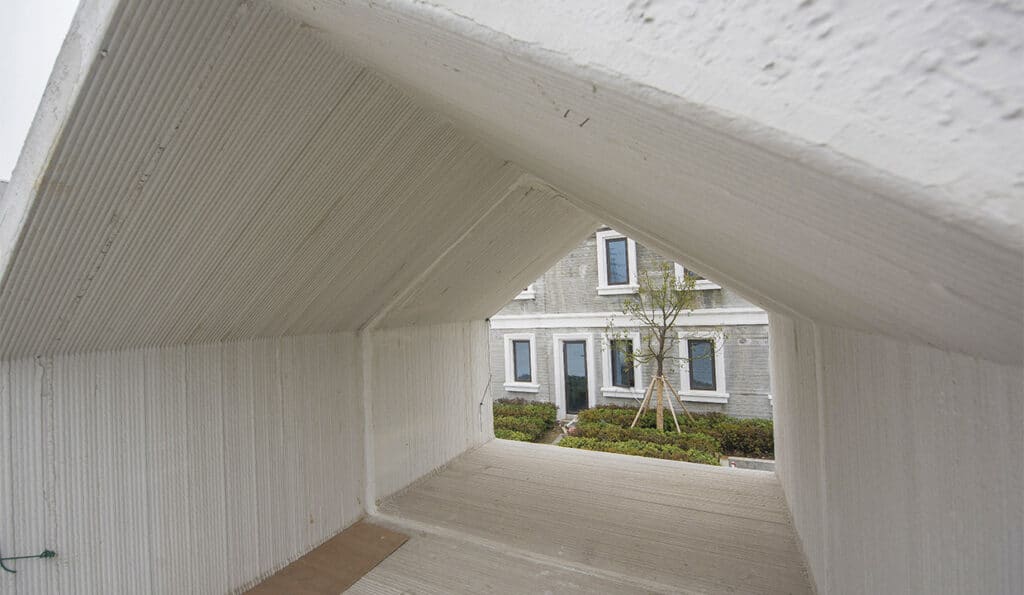
A few years back, 3D printing of toys, spare parts and other objects became a trend. It was a fast way of producing items which were equally sold at a quicker pace than the traditional system of manufacturing and processing. It was also a novelty then, and has since evolved into large-scale production.
Today, 3D printing has taken a higher level, from midsole parts of a famous brand of rubber shoes printed out in large volumes, to automobile and airplane parts.
3D printing, technically known as additive manufacturing process, forms a three-dimensional solid object from a digital file without wasting materials. It is the opposite of what is called a subtractive manufacturing process, where a final output is formed out of a block of a material.
Promising
In the design and construction industry, 3D is still in its promising stage. There have been attempts to replicate a digital 3D file into a printable solid form, some with success, but on a smaller scale.
Lots of questions are thrown to a novel idea in its infancy stage, yet 3D printing has stirred excitement globally as the idea to mass-produce houses in a faster, better way has captivated the imagination of developers, creative professionals, scientists, even space explorers.
NASA has even opened up an architectural competition for a housing shelter colony design for Mars, while the European Space Agency worked with architectural Firm Foster+Partners in the US for a model lunar colony with the idea of using materials from moon rock, and producing shelter by transporting a 3D printer model instead of transporting materials from planet to planet. Such ambitious plans just boggle one’s imagination.
In the Middle East, Dubai is also a haven of futuristic and grand designs. It has partnered with Gensler and WinSun to create the world’s first printed office building. Questions like how the printed office buildings are going to be stacked together arise, but the important thing is it has shown that 3D printing of buildings is possible.
Newer, faster, better
First, there is creativity in making new —newer— shapes.
For traditional methods of pre-fabricated or cast-in-place, welded steel fabrication, machining or injection moldings, some complex designs may be difficult to achieve or be made into a mold. With 3D printing, any geometrical design is possible.
The second point is that the production process is faster.
The beauty of 3D technology is that prototypes can be done in hours. In fact, if additions are to be done after the first prototype, it can be done quickly and with little expense.
Third, it can be printed immediately, made lighter and even stronger, with less waste. It is also cost-effective.
Speed is the key here. There is no time wasted and 3D printing may give those a good start, way ahead of those in the traditional cast-in-place molding, pre-fabricated lego-type or machining process. The type of materials to be used may even lighten the product and, in the process, make it more fuel- or cost-effective, and handled faster.
Downside
The downside of 3D printing for houses at this stage, as discussed by architects and engineers, is that the 3D printing machine still tackles the layered process of walling. It has not incorporated other components of building technology, such as various architectural materials, and the structural components of the buildings as it goes up from floor to floor.
Then there is the question of size and volume. As 3D printing is based on the equipment’s chamber size, it is limited. Add to that the limited materials that the 3D printer can use up, such as plastic, cement and maybe a few metals. These are all dependent on the temperature-control factor of the 3D equipment. Thus, several construction types of materials will be left out, such as glass, wood, galvanized iron sheets, steel, sand and gravel, and so on.
The promise of 3D printing for houses has yet to manifest itself especially in low-cost housing. Like any idea in its infancy stage, the horizon is wide and possibly lucrative. It has yet to tackle challenges of traditional construction methods, detail architectural designs and address the basic question of “form follows function.”
Yet the opportunity is ripe for the picking. The world indeed awaits 3D printing for houses.
#realestateblogph | #realestateblogphpropertynews | #REBPH | #realestate | #3DPrinting | #3DHouses
Article and Photo originally posted by Property Report Ph last January 22, 2021 12:00am and written by Arch. Benjamin Panganiban Jr.







More Stories
Vista Land Celebrates 50 Years with Sandiwa: An Event Honoring Leadership, Legacy, and the Filipino Dream of Homeownership
Vista Land Celebrates Love Month in Ilocos Region
Vista Land Bridges Cebuano Heritage and Progress with Valencia by Vista Estates